 1991 Toyota Soarer III Dimensions, Size & Specs
1991 Toyota Soarer III Dimensions, Size & SpecsMeasurements of the 1991 Toyota Soarer III, engineered for optimal performance and comfort
| Dimensions | |
|---|---|
| Length: | 4860 mm191.3 in15.9 ft |
| Width: | 1790 mm70.5 in5.9 ft |
| Height: | 1340-1350 mm52.8-53.1 in4.4-4.4 ft |
| Weight Specifications | |
| Curb Weight: | 1560-1640 kg3439-3616 lbs |
| Maximal permitted Weight: | 1835-1915 kg4045-4222 lbs |
| Tire Specifications | |
| Rims Size: |
|
| Tire Sizes: |
|
The Toyota Soarer III, produced from 1991 to 1995, represents the third generation of Toyota's luxury grand touring coupe. With a sleek and aerodynamic design, the Soarer III combines elegant styling with performance-oriented features, appealing to enthusiasts and luxury buyers alike. The vehicle measures 4860 mm (191.3 inches) in length and 1790 mm (70.5 inches) in width, giving it a balanced and substantial road presence without being overly bulky. Its height varies slightly between 1340 mm to 1350 mm (52.8 to 53.1 inches), contributing to its low-slung coupe stance and sporty appearance.
Weight plays a crucial role in the Soarer III’s driving dynamics. The curb weight ranges from 1560 to 1640 kg (3439 to 3616 lbs), depending on specific trim levels and equipment, while the maximum weight is between 1835 and 1915 kg (4047 to 4221 lbs). These weight specifications reflect a robust construction balanced with performance considerations, enabling confident handling and stable cruising capabilities.
The Soarer III rides on 16-inch rims, typically fitted with tire sizes 225/55 R16, though 15-inch tires sized 215/60 R15 were also available. These tire options provide a blend of comfort and grip, suitable for the car’s grand touring nature.
Overall, the 1991-1995 Toyota Soarer III embodies a refined coupe that offers generous dimensions for its class, a solid build quality with moderate weight, and tire and rim options aimed at a smooth yet responsive driving experience. It remains a notable example of early 1990s Japanese luxury coupes, blending performance and stylish size metrics for a compelling package on the road.
Discover the standout features that make the 1991 Toyota Soarer III a leader in its class
Have a question? Please check our knowledgebase first.
The Toyota Soarer III, produced between 1991 and 1995, features substantial exterior dimensions befitting a luxury coupe class. It measures 4860 mm (191.3 inches) in length, providing ample space for a sleek yet spacious profile. The width is 1790 mm (70.5 inches), offering a stable stance on the road, while the height varies slightly between 1340 mm (52.8 inches) to 1350 mm (53.1 inches), depending on specific model variants or suspension settings. These dimensions give the Soarer III a balanced and aerodynamic form, characteristic of early 1990s luxury coupes, allowing both style and practical aerodynamics.
The curb weight of the Toyota Soarer III ranges between 1560 kg to 1640 kg (3439 to 3616 lbs), which reflects the car's base weight including standard equipment, necessary fluids, and a full fuel tank without passengers or cargo. The maximum weight, which includes occupants and cargo, spans from 1835 kg to 1915 kg (4047 to 4221 lbs). This weight range impacts driving dynamics, fuel efficiency, and handling, where a heavier vehicle typically offers enhanced stability but may reduce fuel economy. The Soarer III balances these factors by providing a solid structure to enhance ride quality and luxury feel without excessive weight.
The Toyota Soarer III comes equipped with rim sizes of 16 inches, which was competitive in the early 1990s luxury coupe segment. Tire sizes vary between 225/55 R16 and 215/60 R15, depending on the trim and market version. The 225/55 R16 tires offer a wider tread for increased grip and stability, favoring sporty handling characteristics. In contrast, the 215/60 R15 tires provide more cushioning and comfort over road irregularities. Together, these options allowed drivers to choose between a firmer, more responsive ride or a smoother, more luxurious drive, catering to diverse preferences.
The Toyota Soarer III, with its length of 4860 mm (191.3 inches), width of 1790 mm (70.5 inches), and height between 1340 mm to 1350 mm (52.8 to 53.1 inches), fits comfortably within standard residential garage dimensions. Most standard single-car garages provide minimum dimensions around 5400 mm (213 inches) in length and 2700 mm (106 inches) in width, which leaves ample clearance for parking and maneuvering. The low height of the Soarer III further enhances garage compatibility, especially in buildings with standard ceiling heights. Therefore, owners can expect minimal difficulty parking or storing this classic coupe indoors.
Compared to the previous generation Toyota Soarer (Soarer II, 1986-1991), the Soarer III introduced a longer and slightly wider body. The Soarer III measures 4860 mm in length versus approximately 4775 mm of the Soarer II, granting extra cabin space and enhanced road presence. Width increased marginally from about 1750 mm to 1790 mm, contributing to better stability and interior comfort. Height remained relatively similar, ensuring the sporty coupe silhouette was preserved. This enlargement reflects a trend toward more luxury and comfort, offering a more refined and spacious driving environment than its predecessor while maintaining its sleek appearance.
The Toyota Soarer III holds its own among early 1990s luxury coupes such as the Lexus SC and Nissan 300ZX. Dimensionally, the Soarer III's 4860 mm length and 1790 mm width place it in the mid-to-large coupe segment, similar to the Lexus SC400's length of about 4800 mm and comparable width. While the Soarer III offers a slightly lower height, enhancing its sporty stance, the curb weight range aligns with competitors, balancing luxury comfort with solid driving dynamics. In terms of driving experience, the Soarer III is praised for its smooth ride, refined engine options, and advanced features for the time, rivaling or surpassing contemporaries in terms of luxury and performance refinement.
While exact interior dimensions typically vary by trim and market, the Toyota Soarer III offers a spacious luxury cabin typical for a 2-door coupe of its era. Thanks to its extended exterior length of 4860 mm (191.3 inches) and widened body at 1790 mm (70.5 inches), occupants benefit from generous shoulder room and legroom, especially in the front seats. Rear seating, designed mainly for occasional passengers, provides comfort sufficient for short trips but less so for extended travel. The relatively low height around 1350 mm (53.1 inches) helps create a sporty, driver-oriented cockpit while balancing headroom adequately for a coupe.
The Toyota Soarer III's curb weight range of 1560 to 1640 kg (3439 to 3616 lbs) substantially influences its fuel efficiency and performance capabilities. A moderately heavy load contributes to a stable, smooth ride, reducing vibrations and providing a premium feeling typical of luxury vehicles. Nevertheless, increased weight can reduce acceleration and fuel economy compared to lighter vehicles. However, the Soarer III balances this by pairing its weight with efficient engine options and aerodynamic design, ensuring respectable fuel consumption and brisk performance that meets luxury coupe expectations in the early 1990s without sacrificing comfort or driving enjoyment.
The Toyota Soarer III's engineering balances its substantial size—4860 mm length and curb weight up to 1640 kg—and its role as a sporty luxury coupe with advanced suspension technologies for its period. The car typically utilizes independent suspension setups front and rear, designed to absorb road irregularities while maintaining sporty handling. The combination of wide tires (225/55 R16 or 215/60 R15) and well-tuned suspension offers precise steering feedback, reduced body roll, and a composed ride, allowing the Soarer III to deliver confident cornering and strong highway stability despite its size and weight, suiting both spirited driving and luxury comfort.
The Toyota Soarer III was notable for its elegant yet aggressive design reflecting early 1990s automotive trends in luxury coupes. It featured sleek, aerodynamic lines, pop-up or fixed headlights depending on market, and a well-proportioned stance emphasizing sporty luxury. Technologically, it incorporated advanced features such as electronically controlled suspension, digital instrumentation options, and powerful, smooth inline-six engines (such as the 1JZ-GTE twin-turbo variant), highlighting Toyota’s focus on innovation and driver experience. These attributes made the Soarer III a competitive luxury coupe in terms of both aesthetics and technological sophistication during its production years.
Discover similar sized cars.
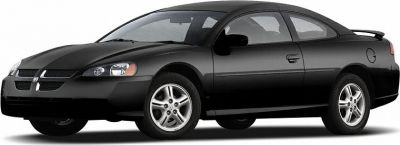
| Production: | 2001-2006 |
|---|---|
| Model Year: | 2001 |
| Length: | 4849 mm190.9 in |
| Width: | 1786 mm70.3 in |
| Height: | 1364 mm53.7 in |

| Production: | 1995-2001 |
|---|---|
| Model Year: | 2005 |
| Length: | 4860 mm191.3 in |
| Width: | 1790 mm70.5 in |
| Height: | 1340-1350 mm52.8-53.1 in |
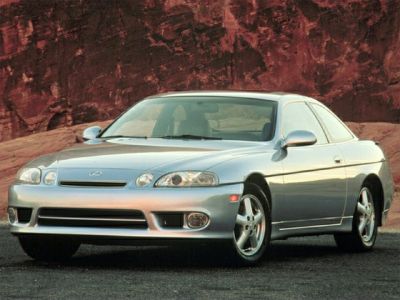
| Model Year: | 1991 |
|---|---|
| Length: | 4850-4860 mm190.9-191.3 in |
| Width: | 1790 mm70.5 in |
| Height: | 1330-1340 mm52.4-52.8 in |
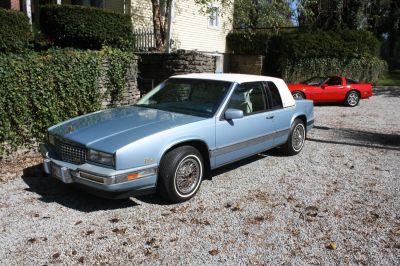
| Production: | 1988-1990 |
|---|---|
| Model Year: | 1988 |
| Length: | 4856 mm191.2 in |
| Width: | 1811 mm71.3 in |
| Height: | 1365 mm53.7 in |
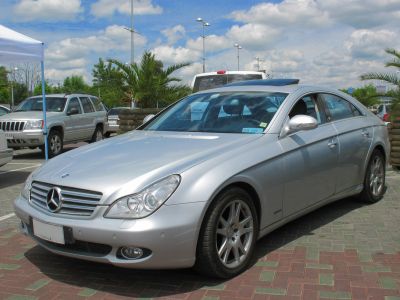
| Production: | 2004-2008 |
|---|---|
| Model Year: | 2004 |
| Length: | 4915 mm193.5 in |
| Width: | 2059 mm81.1 in |
| Height: | 1389-1403 mm54.7-55.2 in |

| Production: | 1980-1985 |
|---|---|
| Model Year: | 1981 |
| Length: | 4910 mm193.3 in |
| Width: | 1828 mm72.0 in |
| Height: | 1406 mm55.4 in |
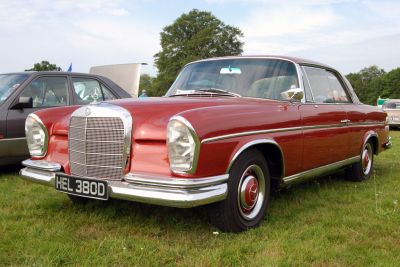
| Production: | 1960-1971 |
|---|---|
| Model Year: | 1961 |
| Length: | 4880-4905 mm192.1-193.1 in |
| Width: | 1845 mm72.6 in |
| Height: | 1410-1445 mm55.5-56.9 in |
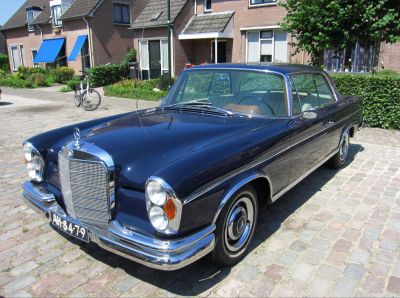
| Production: | 1962-1967 |
|---|---|
| Model Year: | 1962 |
| Length: | 4880 mm192.1 in |
| Width: | 1845 mm72.6 in |
| Height: | 1395 mm54.9 in |
